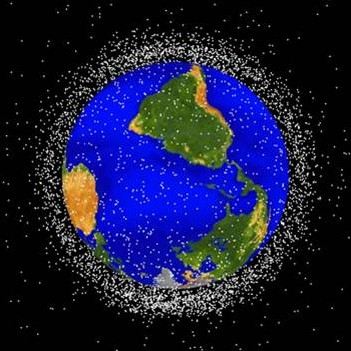
Editor’s note: The following guest post is by Scott Spence, Director, Raytheon Space Fence Program, Integrated Defense Systems.
Yesterday marked a momentous day in U.S. history as NASA launched its final space shuttle, ending a 30-year era. Four astronauts—commander Chris Ferguson, pilot Doug Hurley and mission specialists Rex Walheim and Sandy Magnus—are leading the 12-day Atlantis mission, the 135th and final flight of the storied space shuttle program. After Atlantis returns to Earth, NASA will officially retire the program and shift its focus to developing next-generation crew exploration vehicles (CEV) capable of carrying crew and cargoes to Earth’s orbit, the moon and Mars.
But just days before the Atlantis launch, something unexpected made headlines.
Rocketing past the International Space Station at 29,000 miles per hour, a piece of space debris came only 1,100 feet away from a collision, forcing crew members to take refuge in two space capsules reserved for an emergency escape.
Since the launch of the first artificial satellite, Sputnik 1, in 1957, Earth’s low orbit has become increasingly filled with man-made space debris—objects ranging from a single fleck of paint to larger explosion and collision fragments to entire defunct satellites. Just two years ago, an Iridium satellite collided with an expired Russian Cosmos spacecraft, significantly contributing to the amount of debris already orbiting the Earth.
A piece of debris as small as one centimeter traveling at incredibly high speeds can completely destroy an operational satellite if the orbits of the two intersect. Leveraging existing technologies, more than 20,000 objects have been catalogued by Space Command, but it is estimated that more than half a million pieces exist. Though untracked, these pieces of “space junk” can be lethal to our space systems—from military space systems to commercial systems to civil space systems—no one is invulnerable to the threat.
Our Increasing Dependence on Space
Throughout the past ten years, space has become inextricably linked to all aspects of human life. Just try to imagine one day without essentials like ATM machines, GPS devices, DirectTV and Weather.com. Both private activity and global commerce largely depend on communication, remote sensing and navigation satellites from space. Just three years ago, world government space program expenditures reached historical highs of more than $62 billion dollars.
Similarly, space has become vital to military operations. Investments in satellite communications programs have been climbing rapidly, reaching $6.6 billion spent in 2008 for both non-classified defense and civil programs. But the increasing importance of space to daily life, global commerce and national security has given rise to a major concern about the vulnerability of American space systems to disruption in the event of international conflict.
Consequently, more than 128 satellites are planned for launch in the next decade driven largely by our nation’s defense sector.
But this growing number of satellites in orbit around the Earth has made space a much more hazardous place in recent years. Low orbits have now become so crowded that operators are regularly forced to make emergency maneuvers by firing thrusters to avoid disasters.
This coupled with the rapid proliferation of space debris highlights the imperative for more precise space tracking and surveillance improvements.
Emerging Opportunities
In the near future, enhanced “space situational awareness” capabilities will be paramount to detecting and reporting on the proliferation of space debris and ever-increasing numbers of space objects in Earth’s lower orbits.
As various organizations and individuals focus on developing the next disruptive technology to combat the space debris crisis, the U.S. Air Force is simultaneously working to improve its space surveillance capability. First it wants to replace its current Space Surveillance System, or VHF Fence, which has been in service since 1961. The replacement program, dubbed Space Fence, will be designed to provide enhanced space surveillance capabilities to detect, track and measure these smaller pieces of debris as well as commercial and military satellites. For example, Space Fence will be able to detect a piece of debris the size of a softball traveling at 17,000 miles per hour from more than 1,800 miles away. This enhanced capability will allow precise cataloging of up to 10 times the number of low earth orbiting objects than the current systems in place.
Most importantly, Space Fence’s enhanced situational awareness capabilities will provide more accurate positioning data, providing satellites and spacecraft with much longer lead times to assess potential collision dangers and make more timely and strategic maneuvering decisions. For example, had this technology been operational during last week’s close call for the International Space Station, Space Fence would have provided highly accurate tracking data long before the threatening piece of space debris even approached. Instead of having only 15 hours of lead time, NASA could have had much more time and information necessary to make an informed decision to maneuver—or not—eliminating the need to consider an emergency crew evacuation.
Space Fence will be designed to create a larger field of vision using sensors in both hemispheres to provide a more complete picture of orbiting objects. Delivery of the first radar system is expected by 2015.
Once we have better data about what kind of debris is out there, we can develop all sorts of products and businesses to take advantage of the data and build better systems to avoid it. That’s where entrepreneurs and computer programmers come in. Improved situational awareness will create a host of opportunities for those daring enough to solve one of the most challenging problems keeping us from fully realizing the commercial potential of space: debris.